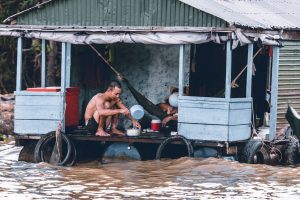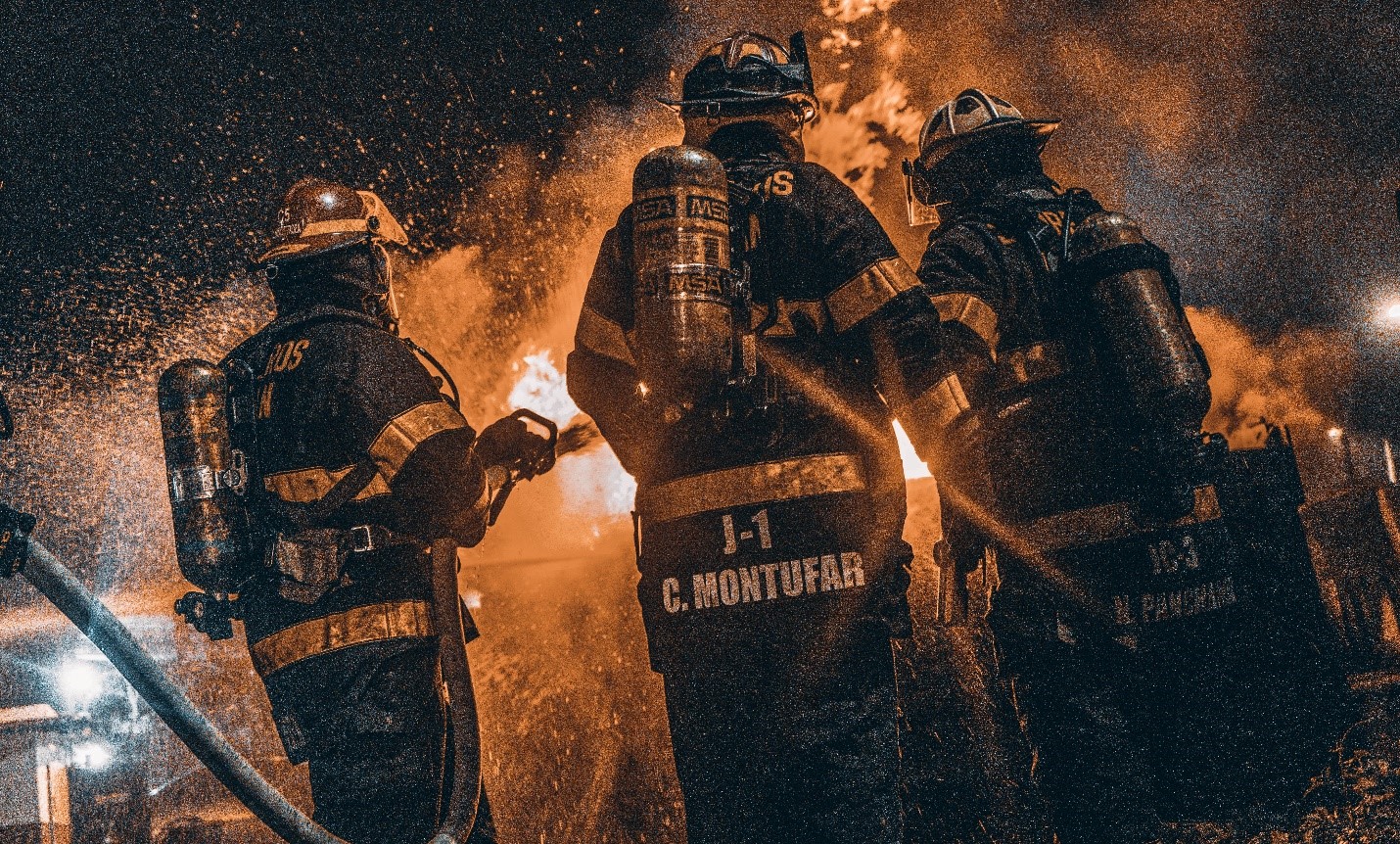In our previous article, we aimed at understanding Disaster Risk Reduction and Management and got to know the basic concepts that are Hazards, Exposure, and Vulnerability, and how they manifest into Disaster Risks. Today’s article covers in detail some of the most common terminologies in Disaster Risk Reduction and Management according to the United Nations to understand how such terms are used in this field, as they are often cited when discussing the same.
- Acceptable risk
Given current economic, social, political, technical, cultural, and environmental conditions, acceptable risk is the degree of possible losses that a society or group finds tolerable. In engineering terms, acceptable risk is also used to assess and define the structural and non-structural measures required to reduce potential harm to people, property, systems, and services to a tolerated level, according to codes or “accepted practice” based on known hazards and other factors.
- Adaptation
According to the secretariat of the United Nations Framework Convention on Climate Change (UNFCCC), which handles climate change concerns (UNFCCC), adaptation is the adjustment to natural or human systems following current or future climatic stimuli or their consequences in order to minimize harm or maximize advantages. Soil degradation and surface subsidence are examples of non-climatic phenomena that are included in the broader concept of adaptation. Adaptation can occur naturally; as a result of market changes, or as a result of purposeful adaptation methods and initiatives. Many disaster risk reduction approaches can directly assist with adaptation.
- Biological hazard
This is an organic or biological phenomenon caused by exposure to toxins, pathogenic microorganisms, and bioactive substances that may cause injury, illness, death, or other health effects, loss of livelihoods, property damage, social and economic disruption, loss of services, or environmental damage. Expansions of epidemic diseases, plant or animal contagion, bug or other animal plagues, and infestations are all examples of biological hazards.
- Building code
A building code is a set of ordinances or rules, as well as related standards, aimed at regulating aspects of structural design, construction, materials, alteration, and occupancy that are necessary to protect human safety and welfare, such as resistance to collapse and damage.
Technical and functional norms can both be found in building regulations. They should take into account lessons learned from other countries and be adjusted to national and local situations. For efficient execution of building codes, a systematic enforcement regime is a vital supporting element.
- Capacity
Capacity is defined as the sum total of a society’s, community’s, or organization’s traits, strengths, and resources that can be leveraged to achieve agreed-upon goals.
Infrastructure and physical means, societal coping abilities, institutions, as well as human knowledge, skills, and collective traits including social relationships, management, and leadership, are all examples of capacity. Capacity is a term that can be used interchangeably with capability. The process of evaluating a group’s capacity versus intended goals and identifying capacity gaps for subsequent action is known as capacity assessment.
- Capacity Development
This defines how people, society, and organizations use skills, knowledge, processes, and institutions to systematically stimulate and develop their capacity over time in order to attain social and economic goals. Capacity development is a notion that broadens the definition of capacity building to include all aspects of generating and maintaining long-term capacity growth. It entails not only education and training, but also ongoing efforts to improve institutions, financial resources, political awareness, technology systems, and the broader social and cultural enabling environment.
- Climate change
– Climate change is defined by the Intergovernmental Panel on Climate Change (IPCC) as “a change in the state of the climate that can be identified (e.g., using statistical tests) by changes in the mean and/or variability of its properties, and that persists for an extended period, typically decades or longer.” Climate change can be caused by natural internal processes or external forces, as well as chronic anthropogenic changes in the atmosphere or land usage.
– Climate change is defined as “a change in climate that is attributed directly or indirectly to human activity that alters the composition of the global atmosphere and is in addition to natural climate variability observed over comparable time periods,” according to the United Nations Framework Convention on Climate Change (UNFCCC).
Depending on the circumstances, either of these concepts may be appropriate for disaster risk reduction. The UNFCCC definition is more limited since it excludes climate change caused by natural factors. For popular communication, the IPCC definition can be summarized as “A change in the climate that lasts decades or longer, resulting from natural or human-caused causes.”
- Contingency planning
This refers to a management process that analyses specific potential events or emerging situations that might threaten society or the environment and establishes arrangements in advance to enable timely, effective, and appropriate responses to such events and situations.
Contingency planning results in organized and coordinated courses of action with clearly identified institutional roles and resources, information processes, and operational arrangements for specific actors at times of need. Based on scenarios of possible emergency conditions or disaster events, it allows key actors to envision, anticipate and solve problems that can arise during crises. Contingency planning is an important part of overall preparedness. Contingency plans need to be regularly updated and exercised.
- Coping capacity
This is people’s, organizations’, and systems’ ability to face and manage unfavorable conditions, emergencies, or disasters using available skills and resources. The ability to cope necessitates ongoing awareness, resources, and effective management, both in normal times and in times of crisis or adversity. Capacity to cope with disasters aids in the decrease of disaster risks.
- Corrective disaster risk management
This refers to management efforts that address and attempt to correct or lessen existing disaster risks. The goal of this notion is to distinguish between current risks that must be managed and minimized now and the potential dangers that may arise in the future if risk reduction strategies are not implemented.
- Critical facilities
Critical facilities are the fundamental physical structures, technical facilities, and systems that are socially, economically, or operationally necessary to a society’s or community’s functioning, both in normal circumstances and in the event of an emergency.
Critical facilities are components of a society’s infrastructure that support important services. Transportation networks, energy, air and seaports, water, and communications systems, hospitals and health clinics, and fire, police, and public administration service centers are among them.
- Disaster
A disaster is a major disruption of a community’s or society’s functioning resulting in widespread human, economic, material, or environmental losses and impacts that exceed the afflicted community’s or society’s ability to manage using its own resources.
Disasters are frequently described as the result of a mix of factors such as being exposed to a hazard, existing conditions of vulnerability, and a lack of capability or steps to mitigate or cope with the possible negative repercussions. Disease, injury, loss of life, and other negative effects on human physical, mental, and social well-being may occur as a result of disasters, as well as property damage, loss of services, asset destruction, social and economic disruption, and environmental degradation.
- Disaster risk
This refers to the potential disaster losses in terms of lives, livelihoods, health, properties, and services that could occur to a specific community or society at some point in the future. The concept of disasters as the result of continually existing risk conditions is reflected in the term of disaster risk. Different sorts of possible losses are included in disaster risk, which can be difficult to measure. Disaster risks can be quantified and mapped, at least in basic terms, with information on the prevalent hazards and patterns of population and socio-economic development.
- Disaster risk management
Disaster risk management is the systematic process of implementing strategies, policies, and better-coping capacities through the use of administrative directives, organizations, and operational skills and capacities in order to reduce the negative effects of hazards and the risk of disaster. This phrase is a subset of the more generic term “risk management,” and it refers to the specific problem of disaster risks. Through activities and methods for prevention, mitigation, and readiness, disaster risk management tries to avoid, mitigate, or transfer the negative consequences of hazards.
- Disaster risk reduction
This is the concept and practice of lowering catastrophe risks by systematically analyzing and managing disaster-causing elements, such as reduced exposure to hazards, reduced vulnerability of people and property, sensible land and environmental management, and enhanced disaster preparedness. The United Nations-endorsed Hyogo Framework for Action, adopted in 2005, lays out a comprehensive strategy for disaster risk reduction, with the goal of “significant reductions in disaster losses, in lives and in the social, economic, and environmental assets of communities and countries.
The International Strategy for Disaster Reduction (ISDR) system facilitates cooperation among governments, organizations, and civil society players in order to help the Framework be implemented. While the word “disaster reduction” is sometimes used, the term “disaster risk reduction” better captures the continual nature of catastrophe hazards and the ongoing potential to mitigate them.
- Disaster risk reduction plan
This is a document prepared by a government agency, a sector, an organization, or a business that outlines goals and specific targets for disaster risk reduction, as well as the measures needed to achieve these goals. The Hyogo Framework should lead disaster risk reduction plans, which should be examined and coordinated within applicable development plans, resource allocations, and program activities. Plans at the national level must be tailored to each level of administrative responsibility and tailored to the various social and geographical variables that exist. The implementation time frame, roles, and financing sources should all be mentioned in the strategy. Wherever possible, connections to climate change adaptation plans should be made.
- Early warning system
This is the set of capabilities required to develop and broadcast timely and relevant warning information so that individuals, communities, and organizations that are threatened by a hazard can prepare and respond effectively and promptly to minimize the risk of harm or loss. This term incorporates the wide range of criteria required for effective warning responses. Knowledge of the dangers, monitoring, analysis, and forecasting of hazards, communication or dissemination of alerts and warnings, and local capacity to respond to the warnings received are all necessary components of a people-centered early warning system. The phrase “end-to-end warning system” is also used to underline the need for warning systems spanning all stages of hazard identification to community response.
- Ecosystem services
These are the advantages that ecosystems provide to people and communities, according to the Millennium Ecosystem Assessment. Ecosystems can provide “regulating services” like flood control, land degradation, drought control, and disease control, as well as “provisioning services” like food and water, “supporting services” like soil formation and nutrient cycling, and “cultural services” like recreational, spiritual, religious, and other non-material benefits. The foundation for maintaining ecosystem services, particularly those that contribute to reduced disaster risks, is the integrated management of land, water, and living resources that encourages conservation and sustainable usage.
- El Niño-Southern Oscillation phenomenon
This is a complex interaction between the tropical Pacific Ocean and the global atmosphere that causes irregularly occurring episodes of altered ocean and weather patterns in many parts of the world, often with long-term consequences such as altered marine habitats, rainfall changes, droughts, floods, and storm pattern changes.
The El Niño part of the El Niño-Southern Oscillation (ENSO) phenomenon refers to well above-average ocean temperatures along the coasts of Ecuador, Peru, and northern Chile, as well as across the eastern equatorial Pacific Ocean, whereas the La Niña part refers to well below-average ocean temperatures. The Southern Oscillation is a term used to describe the changes in worldwide air pressure patterns that occur as a result of changing weather patterns.
- Emergency management
Emergency management is the organization and management of resources and duties for dealing with all aspects of emergencies, including emergency preparedness, response, and early recovery.
A crisis or emergency is a dangerous situation that necessitates immediate action. Effective emergency response can prevent an occurrence from becoming a disaster. Emergency management entails planning and institutional arrangements that engage and guide the activities of government, non-government, voluntary, and private institutions to respond to the whole spectrum of emergency demands in a comprehensive and coordinated manner. Sometimes the term “disaster management” is used instead of “emergency management.”
- Emergency services
In an emergency, this is a group of specialized agencies with distinct roles and aims for serving and protecting people and property.
Civil protection authorities, police, fire, ambulance, paramedic, emergency medical services, Red Cross and Red Crescent societies, and specialist emergency units of electricity, transportation, communications, and other related services organizations are all examples of emergency services.
- Environmental degradation
This is the reduction of the environment’s ability to meet social and ecological goals and demands.
Environmental degradation can change the frequency and intensity of natural disasters, making communities more vulnerable. Land abuse, soil erosion and loss, desertification, wildland fires, loss of biodiversity, deforestation, mangrove destruction, land, water, and air pollution, climate change, sea-level rise, and ozone depletion are all examples of human-induced degradation.
- Environmental impact assessment
This is the process of evaluating the environmental repercussions of a proposed project or program as part of the planning and decision-making processes with the goal of limiting or reducing the project’s or program’s negative impacts.
An environmental impact assessment (EIA) is a policy tool that provides evidence and analysis of an activity’s environmental implications from conception to decision-making. It’s widely used in national planning and project approval processes, as well as in international development aid initiatives. Environmental impact evaluations should include extensive risk assessments as well as alternatives, solutions, or choices for dealing with problems that have been discovered.
- Exposure
People, property, systems, or other things that are located in hazard zones and are thus at risk of loss. Exposure can be measured by the number of people or the sorts of assets in a given area. These can be paired with the exposed elements’ individual vulnerability to any given hazard to estimate the quantitative risks associated with that hazard in the area of interest.
- Extensive risk
This is the extensive danger associated with the frequent or persistent exposure of dispersed populations to low or moderate-intensity hazard circumstances, sometimes of a relatively localized origin, which can result in devastating cumulative disaster repercussions.
Extensive risk is primarily associated with rural areas and urban fringes, where residents are exposed to and vulnerable to periodic localized floods, landslides, storms, or drought. Poverty, urbanization, and environmental deterioration are all linked to high risk.
- Forecast
This is a definitive statement or statistical assessment of the likelihood of a future event or set of circumstances occurring in a specified area.
A forecast refers to a future condition in meteorology, whereas a warning refers to a potentially harmful future condition.
- Geological hazard
Property destruction, loss of livelihoods and services, social and economic disruption, or environmental damage may result from a geological process or phenomena.
Internal earth activities such as earthquakes, volcanic activity, and emissions, as well as related geophysical processes like mass movements, landslides, rockslides, surface collapses, and debris or mudflows, are all examples of geological hazards. Some of these processes are influenced by hydrometeorological conditions. Tsunamis are difficult to classify because, while they are produced by underwater earthquakes and other geological events, they are primarily an oceanic phenomenon that manifests as a coastal water-related hazard.

- Greenhouse gases
These are natural and artificial gaseous elements of the atmosphere that absorb and emit thermal infrared radiation released by the Earth’s surface, the atmosphere, and clouds. This is the Intergovernmental Panel on Climate Change’s (IPCC) definition. Water vapor, carbon dioxide, nitrous oxide, methane, and ozone are the primary greenhouse gases (GHGs).
- Hazard
Hazard is a dangerous phenomenon, substance, human activity, or condition that has the potential to inflict death, injury, or other negative health consequences, property damage, loss of livelihoods and services, social and economic disruption, or environmental degradation.
According to the Hyogo Framework’s footnote, the hazards of natural origin, as well as linked environmental and technological hazards and risks, are of importance to disaster risk reduction. Such dangers can come from a number of geological, meteorological, hydrological, oceanic, biological, and technological factors, which can sometimes interact. Hazards are quantified in technological contexts by the likely frequency of occurrence of certain intensities for distinct places, as indicated by historical data or scientific investigation.
- Hydrometeorological hazard
This is a process or occurrence of the atmosphere, hydrology, or oceanography that may result in death, injury, or other health consequences, property damage, loss of livelihoods and services, social and economic disruption, or environmental degradation.
Tropical cyclones (also known as typhoons and hurricanes), thunderstorms, hailstorms, tornadoes, blizzards, heavy snowfall, avalanches, coastal storm surges, floods (including flash floods), drought, heatwaves, and cold spells are all examples of hydrometeorological dangers. Other dangers, such as landslides, wildfires, locust plagues, epidemics, and the movement and spread of poisonous compounds and volcanic eruption material, can all be affected by hydrometeorological conditions.
- Intensive risk
This refers to the risk of huge groups of people and economic activities being exposed to extreme hazard events, which can result in potentially catastrophic disasters with substantial death and asset loss.
Intensive risk is primarily associated with large cities or highly inhabited areas that are not only vulnerable to severe disasters such as significant earthquakes, active volcanoes, massive floods, tsunamis, or major storms but are also exposed to them. “Extensive risk” is another term for “high risk.”
- Land-use planning
This is the process by which government officials identify, evaluate, and decide on various land-use options, including the consideration of long-term economic, social, and environmental objectives, as well as the implications for various communities and interest groups, and the subsequent formulation and promulgation of plans that describe the permitted or acceptable uses.
Land-use planning is a critical component of long-term development. It entails research and mapping, as well as the study of economic, environmental, and hazard data, the development of alternative land-use decisions, and the creation of long-term plans at various geographical and administrative scales. By discouraging settlements and the development of essential installations in hazard-prone locations, land-use planning can help to mitigate disasters and reduce hazards, including consideration of service routes for transportation, power, water, sewage, and other critical services.
- Mitigation
Mitigation refers to the lessening or limiting of the negative effects of hazards and related calamities. While dangers cannot always be completely avoided, their magnitude and severity can frequently be significantly reduced through a variety of tactics and activities. Engineering approaches and hazard-resistant construction, as well as better environmental policies and public awareness, are among the mitigation measures. It’s worth noting that “mitigation” is defined differently in climate change policy, with the phrase referring to the decrease of greenhouse gas emissions that cause climate change.
- National platform for disaster risk reduction
This is a generic term for national mechanisms for coordination and policy guidance on disaster risk reduction that are multi-sectoral and inter-disciplinary in nature, with public, private, and civil society participation involving all concerned entities within a country.
Disaster risk reduction requires the knowledge, capacities, and inputs of a wide range of sectors and organizations, including United Nations agencies present at the national level, as appropriate. Most sectors are affected directly or indirectly by disasters and many have specific responsibilities that impinge upon disaster risks. National platforms provide a means to enhance national action to reduce disaster risks, and they represent the national mechanism for the International Strategy for Disaster Reduction.
- Natural hazard
This is a natural occurrence or process that may result in death, injury, or other negative health consequences, property destruction, loss of livelihoods and services, social and economic disruption, or environmental degradation.
All risks include natural hazards, which are a subset of all hazards. Actual hazard events, as well as latent hazard circumstances that may lead to future incidents, are both described by this phrase. Natural disasters are classified by their magnitude or intensity, onset speed, duration, and region of impact. For example, earthquakes last only a few minutes and usually only affect a small area, whereas droughts take a long time to develop and go away and often affect enormous areas. Hazards can be linked in some circumstances, such as a hurricane-caused flood or a tsunami that is created by an earthquake.
- Preparedness
This is the capacity and knowledge acquired by governments, professional response and recovery groups, communities, and people to successfully anticipate, respond to, and recover from the effects of foreseeable, imminent, or existing hazard events or situations.
Preparedness action is carried out as part of disaster risk management and attempts to establish the capacities required to effectively manage all types of catastrophes and accomplish orderly transitions from response to long-term recovery. Preparedness includes activities such as contingency planning, stockpiling of equipment and supplies, developing arrangements for coordination, evacuation, and public information, as well as associated training and field exercises, and is based on a sound analysis of disaster risks and good linkages with early warning systems. These must be backed up by formal institutional, legal, and financial resources. The phrase “readiness” refers to the ability to respond promptly and appropriately when needed.
- Prevention
This is the complete avoidance of negative consequences from hazards and related calamities.
The notion and goal of prevention (i.e., disaster prevention) reflect the concept and intention of totally avoiding probable negative consequences through proactive action. Dams or embankments that prevent flooding, land-use rules that prohibit settlement in high-risk areas, and seismic engineering designs that ensure the survival and function of vital structures in the event of an earthquake are all examples. When total loss prevention is not possible, the effort shifts to mitigation. Partly as a result of this, the phrases preventive and mitigation are frequently used interchangeably in everyday speech.
- Prospective disaster risk management
This refers to management efforts aimed at preventing the emergence of new or increasing disaster risks.
This idea focuses on hazards that may arise in the future if risk reduction measures are not implemented, rather than risks that are currently existing and can be controlled and mitigated.
- Public awareness
This is the level to which the general public is aware of disaster risks, the variables that contribute to disasters, and the measures that can be taken individually and collectively to limit exposure and vulnerability to hazards.
Public awareness is a critical component of effective catastrophe risk reduction. Its advancement is pursued, for example, through the development and dissemination of information through media and educational channels, the establishment of information centers, networks, and community or participation actions, as well as advocacy by senior government officials and community leaders.
- Recovery
This is the repair and, where appropriate, enhancement of disaster-affected communities’ facilities, livelihoods, and living situations, as well as attempts to reduce catastrophe risk factors.
Rehabilitation and reconstruction should begin immediately after the emergency phase has ended, and should be based on pre-existing strategies and regulations that facilitate defined institutional responsibilities for recovery action and public engagement. Following a disaster, recovery programs, in combination with increased public awareness and involvement, provide a valuable chance to create and execute disaster risk reduction strategies, as well as to use the “build back better” philosophy.
- Residual risk
Even when effective disaster risk reduction measures are in place, the danger of mismanaged disasters persists, necessitating the maintenance of emergency response and recovery capabilities. The presence of residual risk necessitates the ongoing development and support of effective emergency services, preparedness, response, and recovery capabilities, as well as socio-economic policies like safety nets and risk transfer mechanisms.
- Resilience
This is the ability of a system, group, or civilization exposed to risks to resist, absorb, accommodate, and recover from the consequences of a hazard in a timely and efficient manner, particularly by preserving and restoring its key basic structures and functions.
The ability to “resile from” or “spring back from” a shock is referred to as resilience. The degree to which a community has the required resources and is capable of organizing itself both before and during times of need determines its resilience in the face of potential hazard events.
- Response
Response is the offering of emergency services and public aid during or soon after a disaster to save lives, limit health impacts, protect public safety, and meet the basic subsistence needs of those impacted.
Disaster response is frequently referred to as “disaster relief” because it is primarily focused on immediate and short-term needs. There isn’t a clear line between this response stage and the succeeding recovery stage. Some response efforts, such as providing temporary housing and water, may last well into the recovery phase.

- Retrofitting
This is the reinforcing of existing structures to make them more resistant and resilient to the harmful impacts of dangers. Retrofitting entails taking into account the structure’s design and purpose, as well as the stresses that the structure may face as a result of certain hazards or hazard situations, as well as the practicality and costs of various retrofitting solutions. Adding bracing to reinforce walls, reinforcing pillars, placing steel links between walls and roofs, installing shutters on windows, and improving the protection of key buildings and equipment are all examples of retrofitting.
- Risk
This is a mixture of an event’s likelihood and its negative repercussions. In public usage, the focus is frequently placed on the concept of chance or possibility, as in “the risk of an accident,” whereas in scientific settings, the emphasis is usually placed on the consequences, as in “possible losses” for a certain cause, place, and period. It should be emphasized that people’s judgments of the importance and underlying reasons for various dangers are not always the same.
- Risk assessment
A risk assessment is a strategy for determining the type and level of risk by analyzing potential hazards and assessing current vulnerabilities that, when combined, could harm exposed people, property, services, livelihoods, and the environment on which they rely.
A review of the technical characteristics of hazards, such as their location, intensity, frequency, and probability; an analysis of exposure and vulnerability, including the physical, social, health, economic, and environmental dimensions; and an evaluation of the effectiveness of current and alternative coping capacities in relation to likely risk scenarios are all part of risk assessments (and risk mapping). A risk analysis process is the name given to this set of actions.
- Risk management
This is the systematic method and practice of dealing with uncertainty in order to reduce the risk of injury and loss.
Risk management entails assessing and analyzing hazards, as well as developing and implementing strategies and specific actions to control, decrease, and transfer risks. Organizations use it to reduce risk in investment decisions and handle operational risks such as business interruption, production failure, environmental damage, social consequences, and fire and natural disaster damage. Risk management is a critical concern for industries like water supply, electricity, and agriculture, whose output is directly affected by weather and climate extremes.
- Risk transfer
After a disaster, a household, community, enterprise, or state authority will obtain resources from the other party in exchange for ongoing or compensatory social or financial benefits provided to that other party, formally or informally shifting the financial consequences of particular risks from one party to another. This is called risk transfer.
Insurance is a well-known kind of risk transfer in which a risk is covered by an insurer in exchange for periodic premium payments. Risk transfer can take place informally within family and community networks where mutual aid is expected in the form of gifts or credit, as well as formally where governments, insurers, multilateral banks, and other large risk-bearing entities establish mechanisms to help cope with losses in major events. Insurance and reinsurance contracts, disaster bonds, contingent credit facilities, and reserve funds are examples of such arrangements, with premiums, investor contributions, interest rates, and past savings covering the expenses, respectively.
- Socio-natural hazard
This is the increased occurrence of certain geophysical and hydrometeorological hazard events, such as landslides, flooding, ground subsidence, and drought, caused by natural hazards interacting with overexploited or degraded land and environmental resources.
This term refers to situations in which human activity increases the likelihood of certain risks over and above their inherent probability. Evidence suggests that the number of disasters caused by such dangers is increasing. Through effective land and environmental resource management, socio-natural dangers can be controlled and avoided.
- Structural and non-structural measures
Structural measures: Any physical structure or application of engineering techniques to achieve hazard resistance and resilience in structures or systems in order to limit or eliminate the potential impacts of hazards. Dams, flood levies, ocean wave barriers, earthquake-resistant structures, and evacuation shelters are all common structural techniques for disaster risk reduction.
Non-structural measures: Any measure that does not involve physical construction and relies on knowledge, practice, or agreement to decrease risks and impacts, such as rules and legislation, public awareness, training, and education. Building rules, land use planning laws and their enforcement, research and assessment, information resources, and public awareness programs are all examples of non-structural approaches.
It’s worth noting that in civil and structural engineering, the term “structural” refers only to the load-bearing structure, with non-structural components such as wall covering and interior fittings.
- Sustainable development
This is the development that satisfies current needs without jeopardizing future generations’ ability to meet their own.
Disaster risk is linked to unsustainable parts of development, such as environmental deterioration, whereas disaster risk reduction, through lower losses and improved development methods, can help achieve sustainable development.
- Technological hazard
A technical hazard is a hazard that arises from technological or industrial conditions, such as accidents, dangerous procedures, infrastructure failures, or specific human activities, and can result in death, injury, illness, or other health consequences, property damage, loss of livelihoods and services, social and economic disruption, or environmental damage.
Industrial pollution, nuclear radiation, toxic wastes, dam collapses, transportation accidents, manufacturing explosions, fires, and chemical spills are all examples of technological risks. Technological dangers may also occur as a direct result of the effects of a natural disaster.
- Vulnerability
Vulnerability refers to the community’s, system’s, or asset’s features and circumstances that make it susceptible to a hazard’s detrimental impacts. Vulnerability can take numerous forms, resulting from a variety of physical, social, economic, and environmental factors. Poor building design and construction, insufficient asset protection, a lack of public education and awareness, limited official acknowledgment of dangers and preparedness measures, and a disdain for sound environmental management are just a few examples.
Vulnerability varies dramatically within and across communities, as well as across time. Vulnerability is defined as a property of an element of interest (community, system, or asset) that is independent of its exposure. However, in everyday usage, the term is frequently used to refer to the element’s exposure.
Through the use of skills acquired from Disaster Risk Reduction and Management (DRRM), you can prevent a hazard from becoming a disaster. This would mitigate its effects by increasing resilience among the communities affected. Undertaking a professional course in Disaster Risk Reduction & Management (DRRM) prepared by Humanitarian Global will equip you with in-depth knowledge in this professional area. Register today for a 10% discount and be sure to subscribe to our newsletter for more insightful articles.erni
![]()





